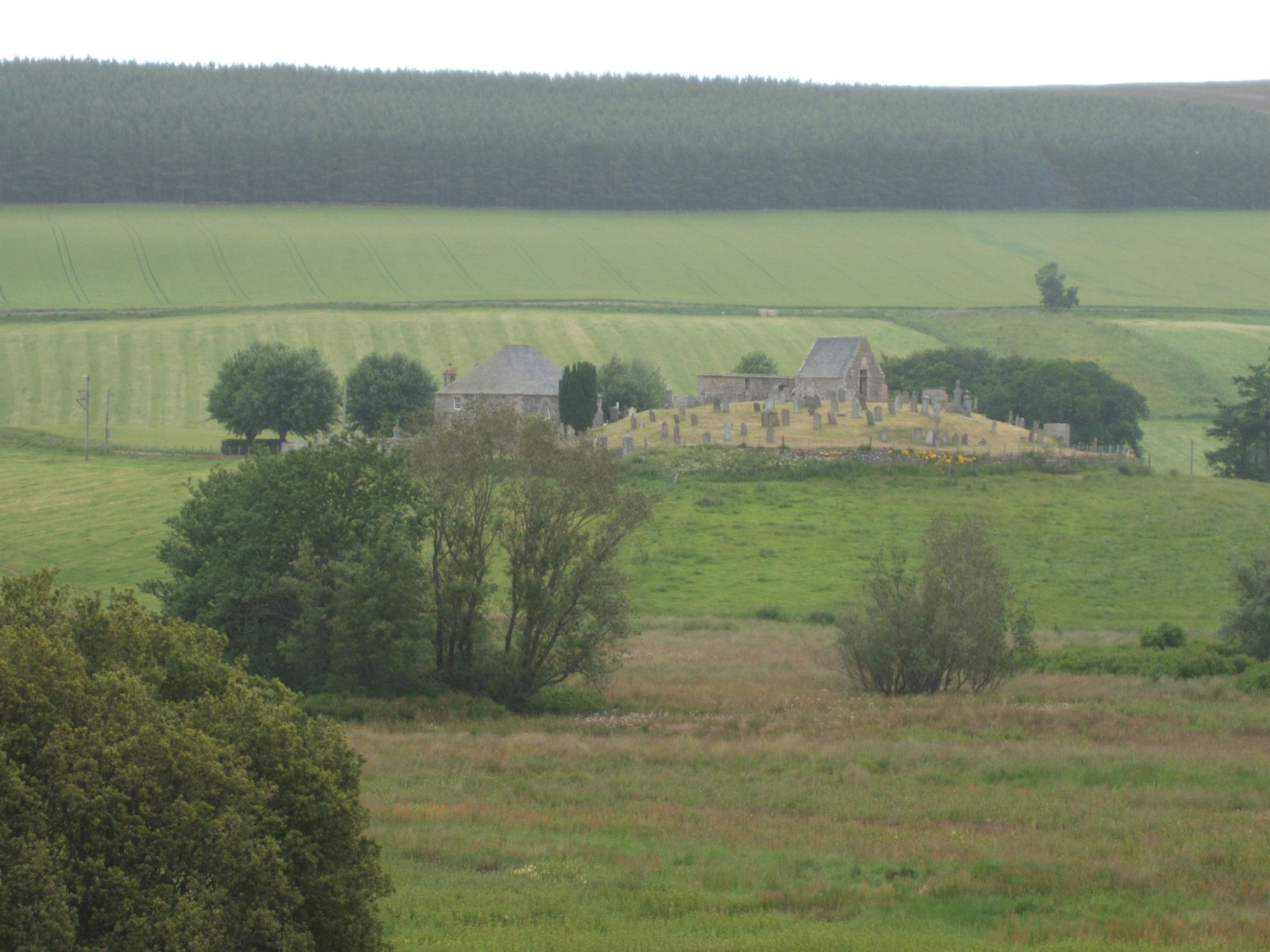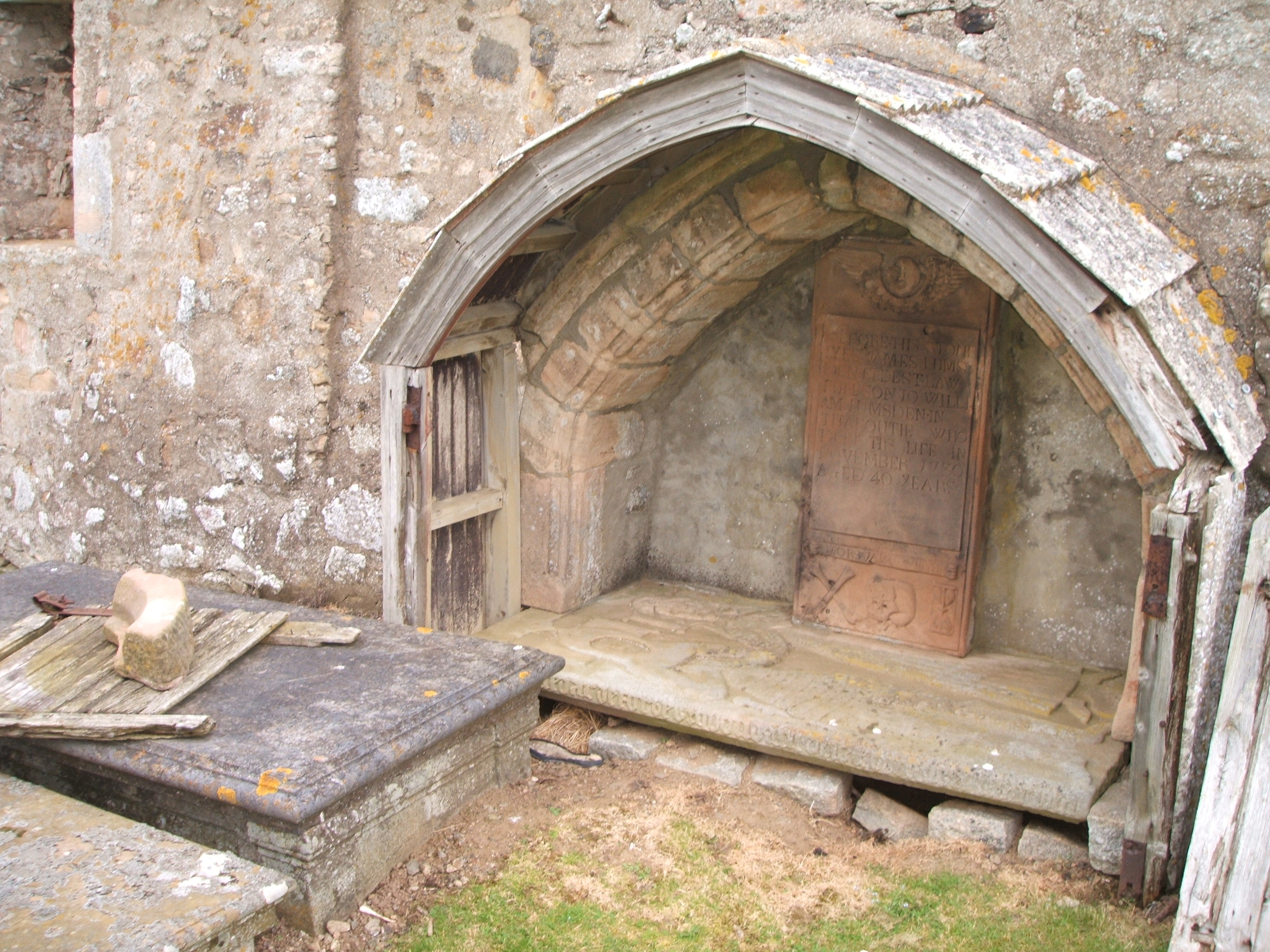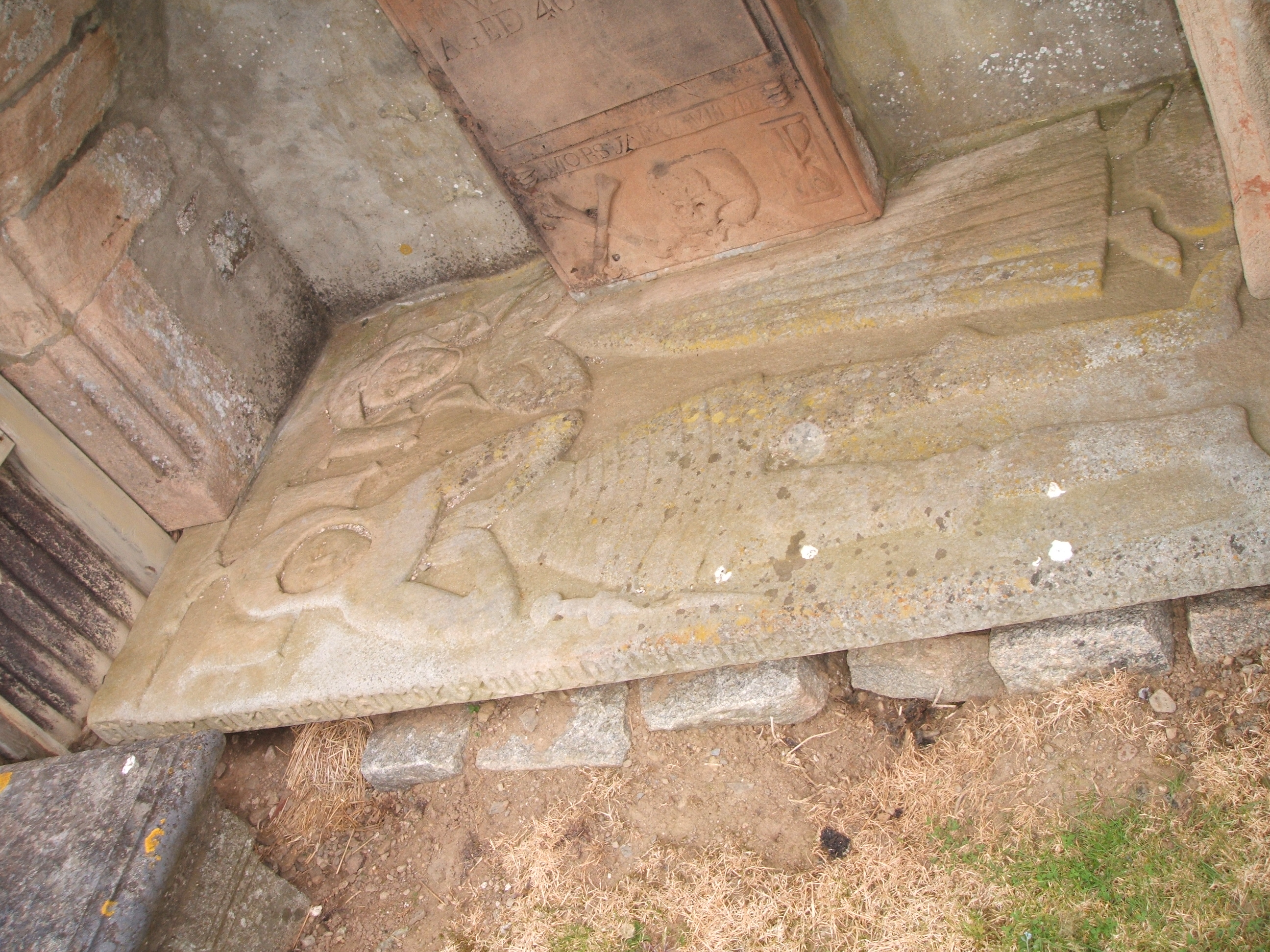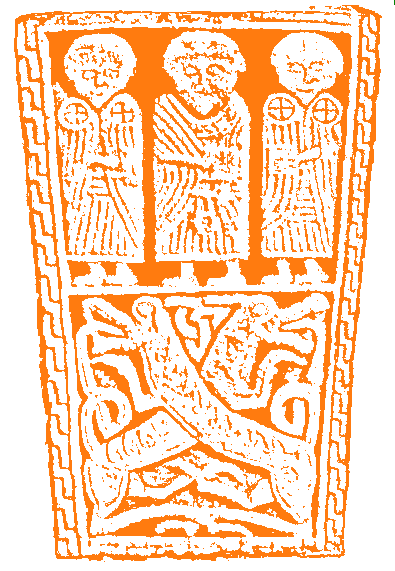St Bride (Bridget)
St Brigid was, of course, Irish and in all probability she never actually set foot on Scottish soil so the reader may well question why she appears in our list of Saints. The answer is simpl - that she has always held a powerful hand over the church in Scotland and that we find a significant number of churches dedicated in her name in the north east.
Bridget, or Bride or Brigid, was one of the most popular of the Irish saints and her cultus was especially popular on the west-coast, including the Hebrides. In England, her pre-Reformation dedications, some nineteen in number, are to be found in the western regions from Devon to Cumberland, marking out as with a pencil the limits of Celtic influence upon these western shores. She is believed to have been born in 451AD and to have died in 525. Like so many other Irish saints she belonged to a royal race, an ancestor having been Tuathal Teachtmhar, monarch of Erin. In popular thought she was so associated with the Virgin Mary that she has been called Mary of the Gael. Indeed, Celtic imagination went even further, and described our Lord as St Bridget's foster-son, a very particular relationship in these ancient times. In an old West Highland incantation occur the lines:-
It was Bride the fair who went on her knee,
It is the King of Glory who is in her lap.
Christ the Priest above us.¹
St Bridget had a number of religious houses under her control in Ireland, but her principal one was at Kildare in Leinster. The flame on her shrine there was kept alight for centuries. It was extinguished in 1220 by command of the archbishop of Dublin, but was afterwards rekindled and it continued to burn till the suppression of the monasteries under King Henry VIII.
"There are many legends and customs connected with Bride. Some of these seem inconsistent with one another, and with the character of the Saint of Kildare. These seeming inconsistencies arise from the fact that there were several Brides, Christian and pre-Christian, whose personalities have become confused in the course of centuries, the attributes of all being now popularly ascribed to one. Bride is said to preside over fire, over art, over all beauty, beneath the sky and beneath the sea. And man being the highest type of ideal beauty, Bride presides at his birth and dedicates him to the Trinity."²
St Bridget is remembered not as the abbess of Kildare but as the simple girl who, like generations of others, both before and after, found her mission in the homely duties of the fireside and the byre, and the echo of whose song, as she brought the cattle home across the moorland, still rings in the ears of her race.
Through the influence of pagan legends, she was endowed in medieval times with the attributes of a fire goddess, and her festival was in consequence often held on Candlemas (2nd February), one of the fire commemorations, and is styled in Gaelic, La Feill Bride, i.e. St Bridget's Festival. According to another Irish tradition, when the Virgin went up to the temple in Jerusalem after the birth of Christ, St Bride walked before her carrying a lighted candle in each hand. Although a strong wind was blowing, the candles did not even flicker. Hence the festival is occasionally called La Fheill Bride nan Coinnle, the Feast-day of Bride of the Candles, and the saint herself Bride boillsge, i.e. St Bride of brightness.
The following Candlemas custom, as practised on the island of Colonsay, is described by Martin Martin (d.1719):
"The Mistress and Servants of each family take a sheaf of oats, and dress it up in womens apparel, put it in a large basket, and lay a wooden club by it, and this they call Briids-bed ; and then the Mistress and Servants cry three times, Briid is come, Briid is welcome. This they do just before going to bed, and when they rise in the morning they look among the ashes, expecting to see the impression of Briid's club there; which if they do, they reckon it a true presage of a good crop, and prosperous Year, and the contrary they take as an ill omen."³

Above: Kildrummy - the old St Bride's Church is on top of the mound.
In art St Bride is often shown with the image of a cow. St Bridget's popularity among the Hebrides continued to recent times. In milking songs and herding blessing, St Bride's name is invoked, and also in churning incantations, where allusion is made to, "the golden-haired Bride of the kine." On the island of Lismore the oyster-catcher is known as gille-Bride, the page or servant of Bride, and in Uist as Bridein, the bird of Bride.

Above: Close-up of the tomb at Kildrummie.

Above: Detail of the tomb slab said to show Alexander Forbes of Brux and his wife.
Along the exposed edge of the slab shown above runs an inscription in Gothic lettering, cut in low relief: ‘hic iacet alxdar de forbes quondam dns de burchis et Mariota….’ (here lies Alexander de Forbes, sometime dominus (lord) of Brux and Mariota …..). The remainder of the inscription has been lost with the truncation of the slab. This Alexander is identified as the fourth laird of Brux (c.1485), a neighbouring estate lying on the south bank of the River Don. Within the estate is Macharshaugh, reputedly one of the sites from which St Machar was active.The slab shows the laird lying beside his wife (Mariota or Marjory), both with hands clasped in prayer. It has been suggested that it is a fifteenth century slab reused in the sixteenth century. However, bearing in mind the conservatively styled effigies encountered elsewhere in the north-east, it is probable that the slab, both effigy and inscription, are of sixteenth century date. Some consider that the grassy mound on which the old kirk of St Bride's sits was a motte, the precursor of the famous castle at Kildrummy.
In Uist, on Bride's Eve, the girls fashion a sheaf of corn into the likeness of a woman. They dress and deck the figure with shining shells, sparkling crystals, primroses, snow drops, and any greenery they may obtain. A specially bright crystal or shell is placed over the heart of the figure. This is called reul-iuil Bride, the guiding star of Bride, and typifies the star over the stable door of Bethlehem which led Bride to the infant Christ. After making a circuit of the place the girls carry the figure of St Bride to a house where a feast is prepared, and where the figure is set up in a conspicuous place in the room.
Whether or not St Bridget herself visited Abernethy, it is certain that the religious community there had special links with her foundation at Kildare. There is a story that King Nectan founded a monastery at Abernethy during St Bridget's lifetime. In any case, according to the Chronicle of the Picts and Scots, a monastic establishment was founded there in her honour by King Garnard towards the end of the sixth century. About 1450, the priory of Abernethy, the medieval successor of Garnard's early foundation, was made collegiate by George Douglas, fourth Earl of Angus, for a provost and six prebendaries. Its counter-seal had a figure of St Bridget, her head surrounded by a nimbus, and her left hand holding a pastoral staff. At her feet, on the rights side, a cow is represented.
In the north-east of Scotland, St Bridget has a chapel dedicated to her at Tomintoul, in Kirkmichael parish, in the old Diocese of Moray. It was situated on the farm of St Bridget, between the village and the river Avon, where vestiges of its walls may still be seen. There was also a chapel in her honour at Banchar in Kingussie parish. Advie church too is said to have been dedicated to St Bridget. The village of Lhanbryde is said by some to derive its name from the saint and the ancient church was certainly dedicated to St Bride. The parish of Dunottar in the Mearns had its church under her invocation, at least from about the end of the fourteenth century. Before that a church dedicated to St Ninian had stood upon the rock of Dunottar, but, about 1394, Sir William Keith, who had been excommunicated by the bishop of St Andrews for building a castle upon the rock, had the interdict removed by a papal bull, on condition that he would build a new church in another part of the parish. This he did on a knoll on the west side of the Carron Water, where some ruins may still be traced. In Aberdeenshire there were several dedications to the saint. The parish churches of Kildrummy and Cushnie were dedicated to her and the spot chosen for the latter church, where its ruins still remain (Brideswell, Cushnie), is said to have been supernaturally revealed to the builders! At the foot of the rising ground upon which Kildrummy church stands was St Bride's Well, whose water was at one time revered for the cure of cattle diseases. The church of what was once the parish of Craigerne, now included in Kemnay, was known as St Bride's Kirk. Among the altars in the famous collegiate church of St Nicholas in Aberdeen was one commemorating St Bridget along with St Duthac of Tain. The patrons of the altar were the magistrates and town council of Aberdeen. Further north there were chapels bearing St Bridget's name at Alhansalloch in Tarbat parish, Papa, Stronsay, and North Ronaldsay in the Orkneys.
The degree to which St Bride was held in honour in the north-east, and over such a lengthy period of time, marks her as one of the influential saints of the period and thus a member of the company of saints listed here.
¹Carmina Gadelica, vol i, p 161.
²Carmina Gadelica, vol i, p 164.
³Western Isles, p 119.
small(transp).png)

